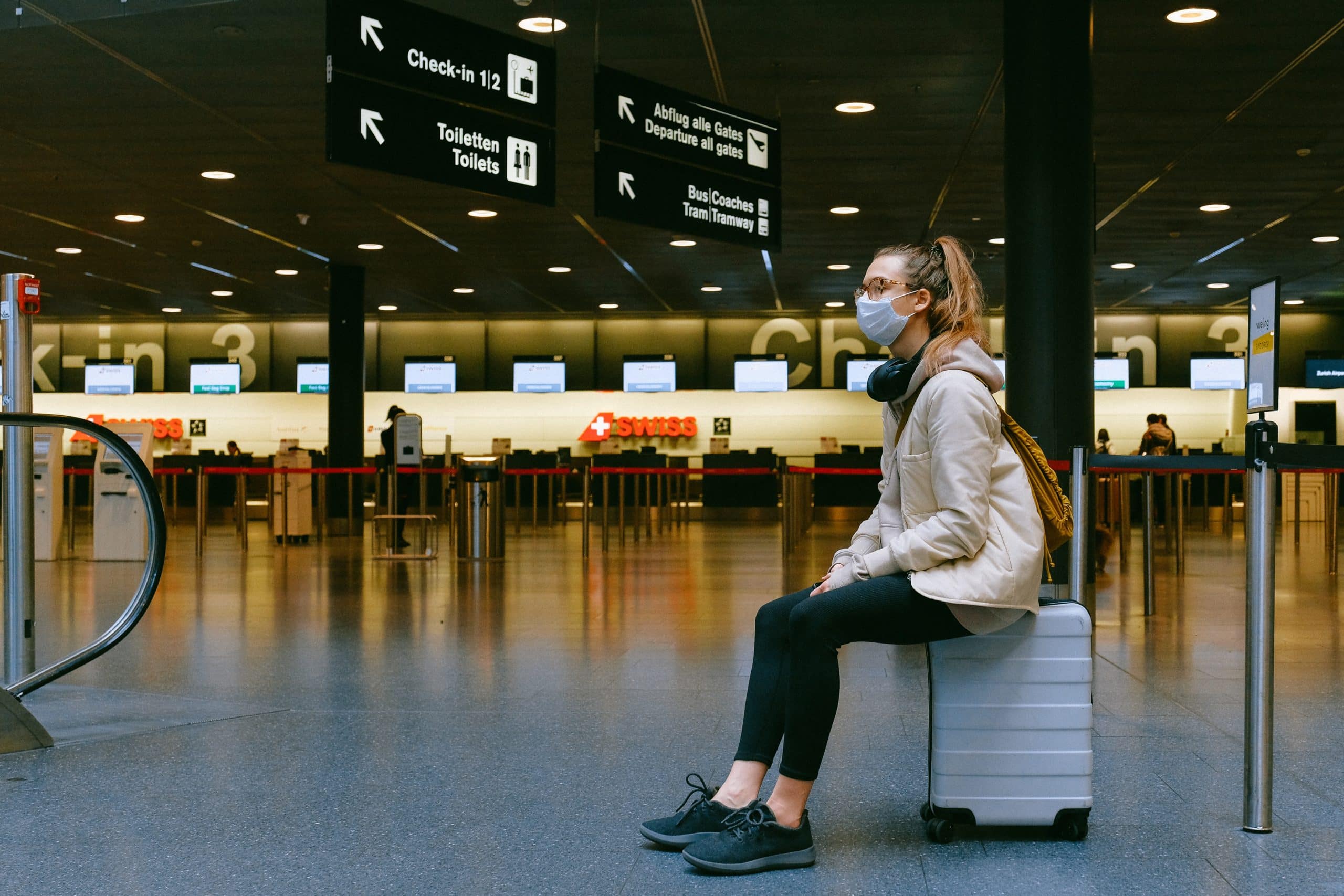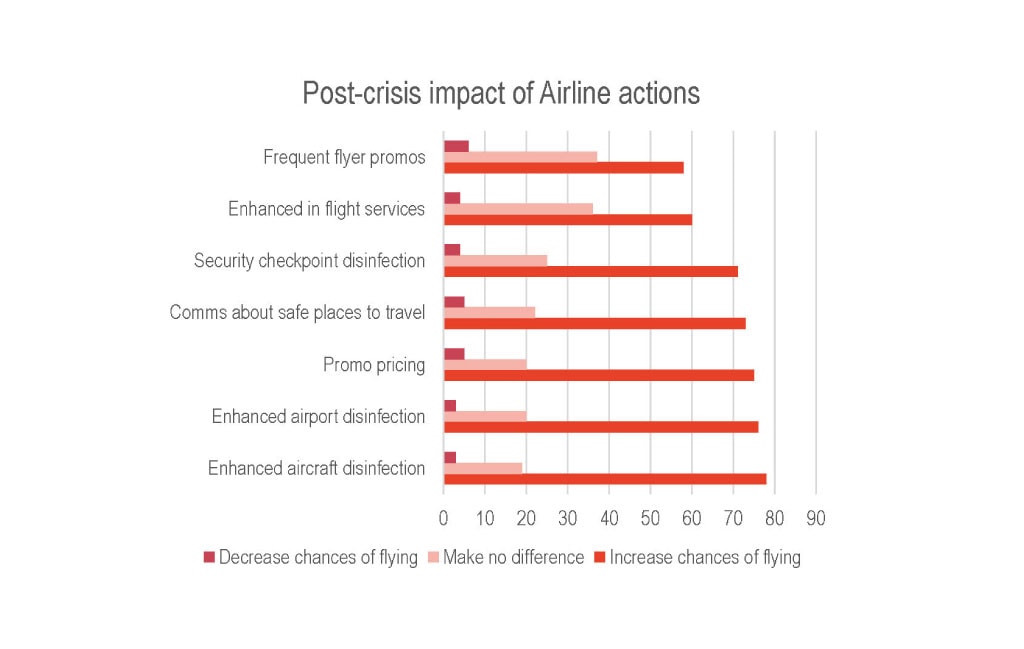Aircraft and Airport Disinfection Key to Air Travel Revival, Study Shows
Share

A study from Engine Insights says 89% of travelers canceled their flights in March because of COVID-19. For passengers to return to the skies, the air travel industry will have to step up disinfection protocols for aircraft, airports and security checkpoints.
When travelers consider flying again, the number one feature they will be looking for won’t be customer service, food, convenient schedule, airline reputation or price. In an Engine Insights survey on what would encourage consumers to return to the skies post-COVID-19, respondents prioritized disinfection procedures for aircraft (#1) and airports (#2), with nearly 80 percent of the 1,004 individuals surveyed in agreement.
“COVID-19 has had a direct and damaging impact on consumer willingness to fly. Unless the airline industry is able to manage those concerns, a sizable minority will fly less even after the CDC declares that it’s safe to do so,” said Andy Turton, senior vice-president, Engine Insights.
The study doesn’t overlook the fact that impactful disinfection of aircraft and airports is costly. Disinfection of security checkpoints (#5), which Turton says is easier and less expensive to sanitize, will likely help ease travelers back into flying.

APEX/IFSA CEO Dr. Joe Leader, who provided his expertise for the survey, said that leading Asian and Middle Eastern airlines have long been leaders in onboard cleanliness and that new procedures from airlines such as Emirates, Alaska Airlines, Delta Air Lines and Virgin Australia, demonstrate further importance in improving cleaning standards, whether a coronavirus is present or not. “Airlines have an opportunity to lead the entire travel industry because we already focus on safety and this will become a natural extension,” Leader said.
IATA’s guidelines for preventing the spread of COVID-19 lists some sanitization measures for airlines. Carriers should first determine whether an operating flight is at a high-, medium- or low-risk for infection, based on factors such as point of departure and arrival, load factor and whether HEPA filters are installed on the aircraft. In addition to protecting crew, maintenance personnel and cleaners, which the guidelines emphasize, here are some other precautionary recommendations:
- Normal meal service should be provided, with a preference for prepackaged food and bottled water. Cold dishes and edible ice cubes should be removed. On high risk flights, meals should be canceled altogether – except for special cases.
- Lavatories should be cleaned once every one to two hours (or after being used five to 10 times) depending on the flight risk.
- Apply wet process cleaning for aircraft during a stopover and a deep cleaning at the end of the flight, with an emphasis on lavatories and galleys.
- Surfaces should be cleaned with rags soaked with disinfectant, with a separate procedure to avoid erosion of cabin components after continued exposure to disinfectants.
- Separate rags and mops, in different colors, should be used for aisles, lavatories and galleys.
- On flights longer than four hours, screening of passengers’ body temperature should occur at different phases of flight.
- The last three rows of seats on international flights should be reserved as a quarantine area and the rear lavatory on the right side should be designated for the quarantine of more serious cases.
Some of the new steps that airlines have added to their standard cleaning processes include fogging cabins, a practice that American, Delta and United airlines have taken, to kill any germs and pathogens before maintenance crew board the plane for more detailed cleaning of surfaces. Qantas and Korean Air have resorted to wipe-downs using more potent, hospital-grade chemical solutions.
“Airlines will need to carefully communicate [their new cleaning techniques] to the market to ensure that the consumers know and understand that important steps have been taken,” said Turton.
Beyond Sanitization
Following closely behind disinfection in the Engine Insights survey are promotional pricing for flights (75% of individuals), as well as information about the safest places to travel (73% of individuals), both most pertinent for Gen-Z and high-income families. The factors least likely to increase changes of flying are enhanced in-flight services (60%) and frequent flyer promotions (58%), but these are still important for Gen-Z flyers and for those earning $100,000+ per annum, respectively.
As for further detail about the types of promotions or pricing that would bring travelers back, Turton said it’s a topic that definitely deserves careful research. “We’ll be pleased to use [our] tools to get answers specific to their airlines, and to help the industry recover faster,” Turton said.


